Visualization for Machine Learning
Spring 2024
Deep Learning
- We will start by reviewing concepts of Deep Learning.
Deep Learning
Understanding Deep Learning by Simon J.D. Prince. Published by MIT Press, 2023.
https://udlbook.github.io/udlbook
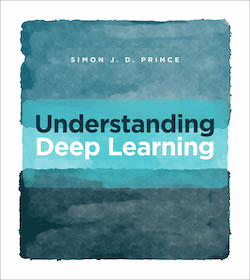
Deep Learning Terminology
Inference: \(y = f[x, \Phi]\)
\(y\): prediction
\(x\): input
\(\Phi\): model parameters
We “learn” the parameters from pairs of “training data” \(\{x_i, y_i\}\)
We quantify the accuracy by using a (scalar) loss function \(L[\Phi]\). The smaller the loss, the better our model “fits” the data.
To check the “generalization” of the model, we run the model on “test data”, which is separate from the training data.
1-D linear regression model
- \(y = f[x, \Phi] = \Phi_0 + \Phi_1 x\)
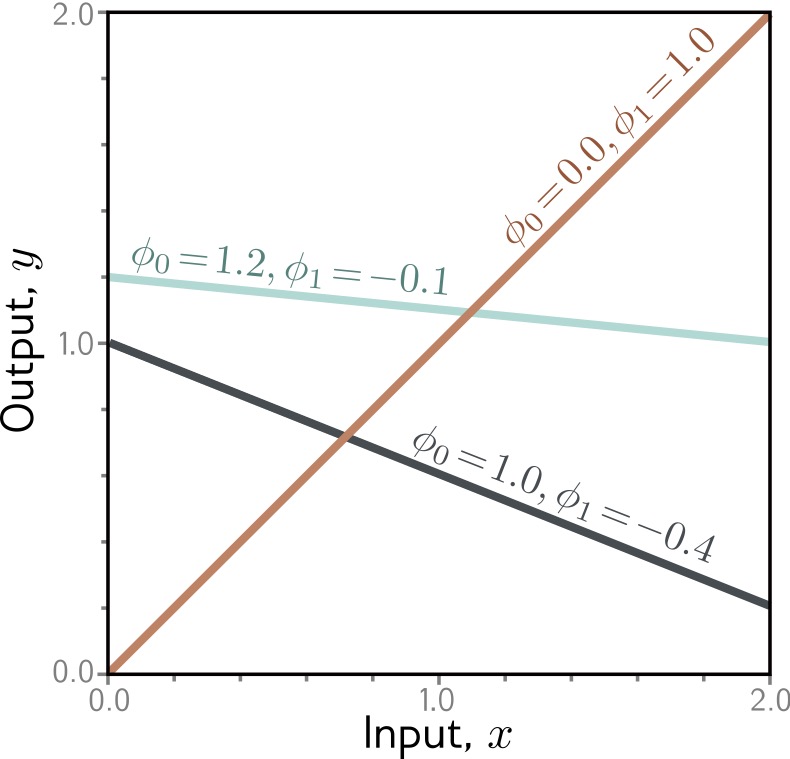
1-D linear regression model: Loss
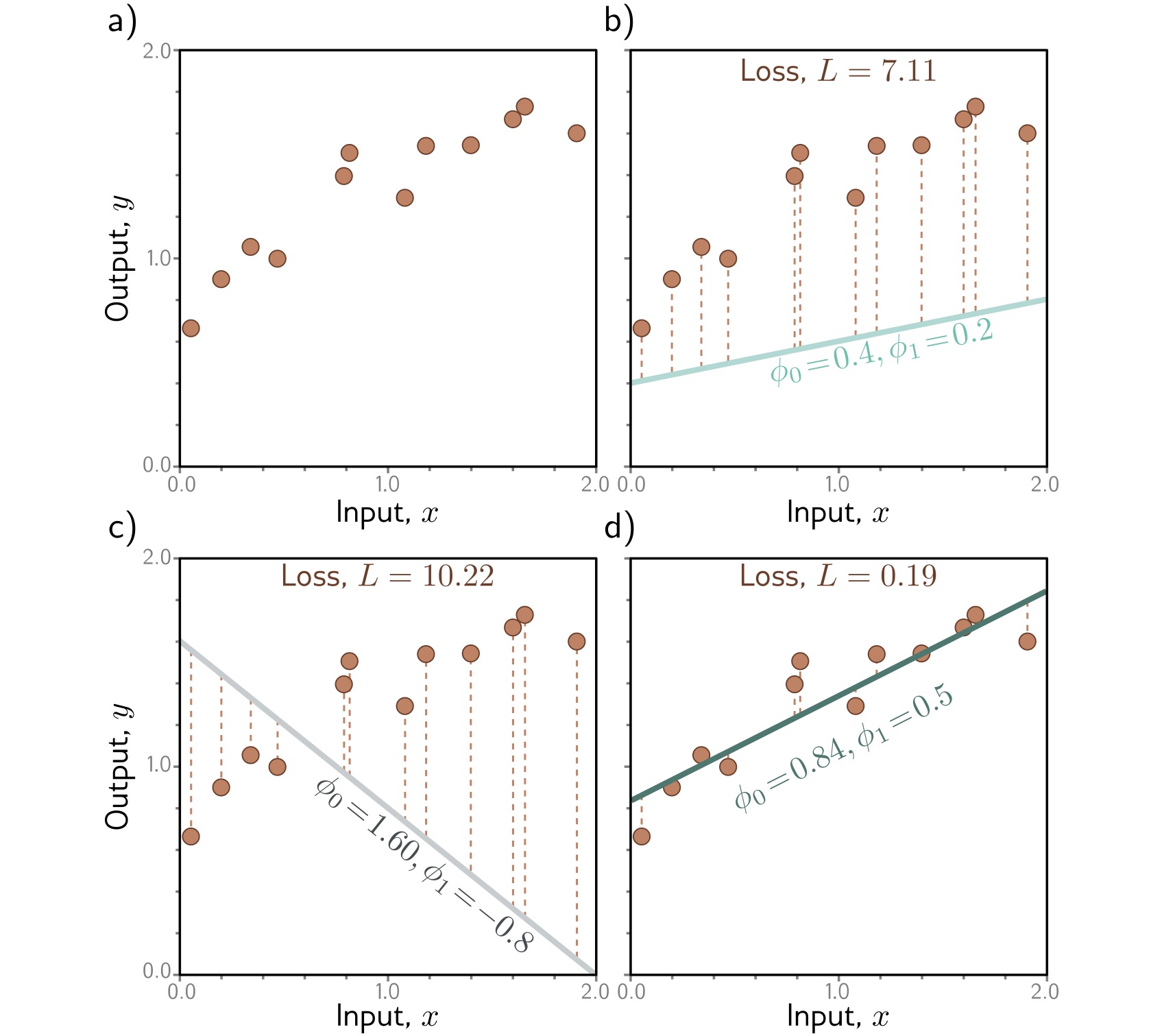
1-D linear regression model: Loss

1-D linear regression model: Loss Surface
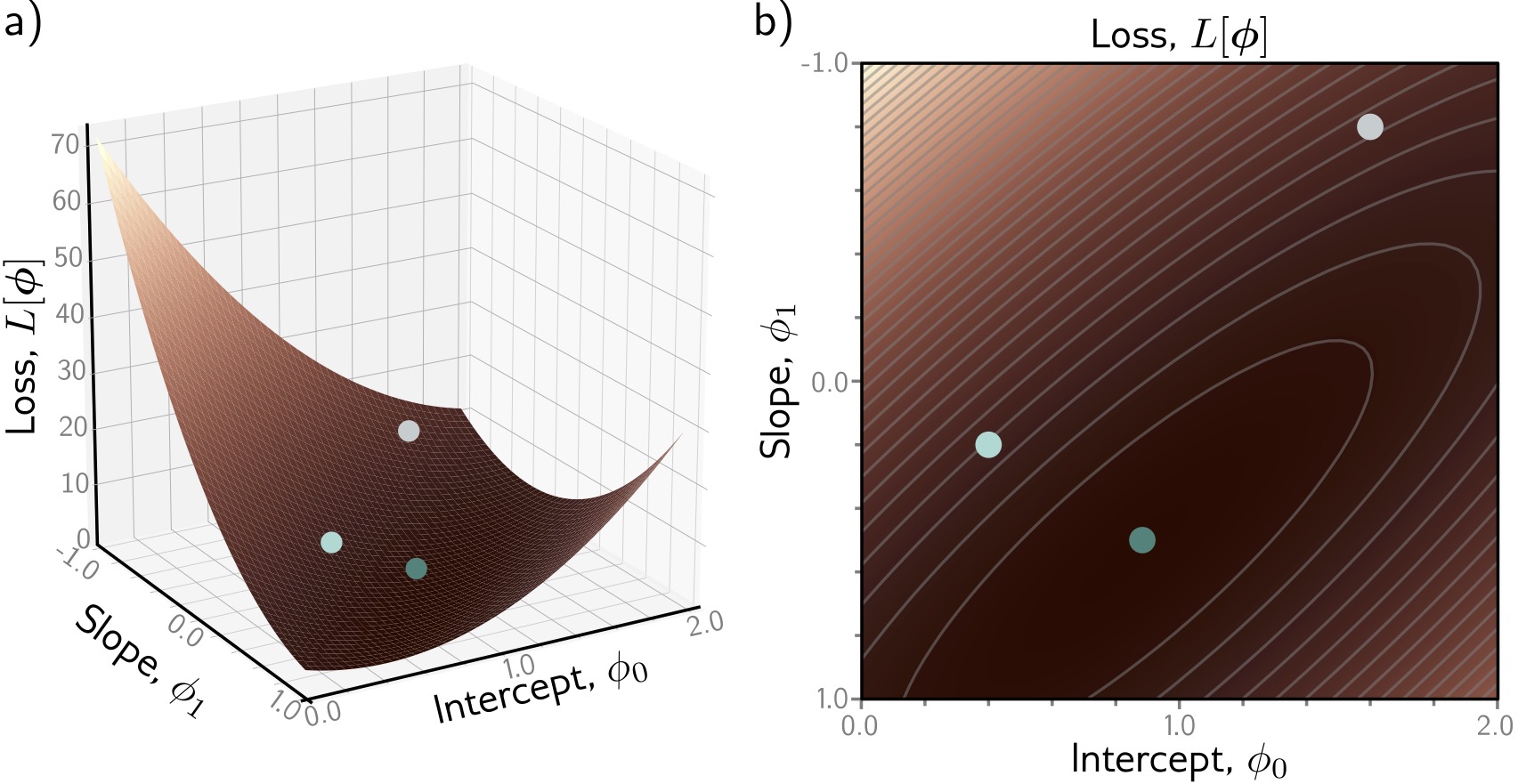
1-D linear regression model: Optimization
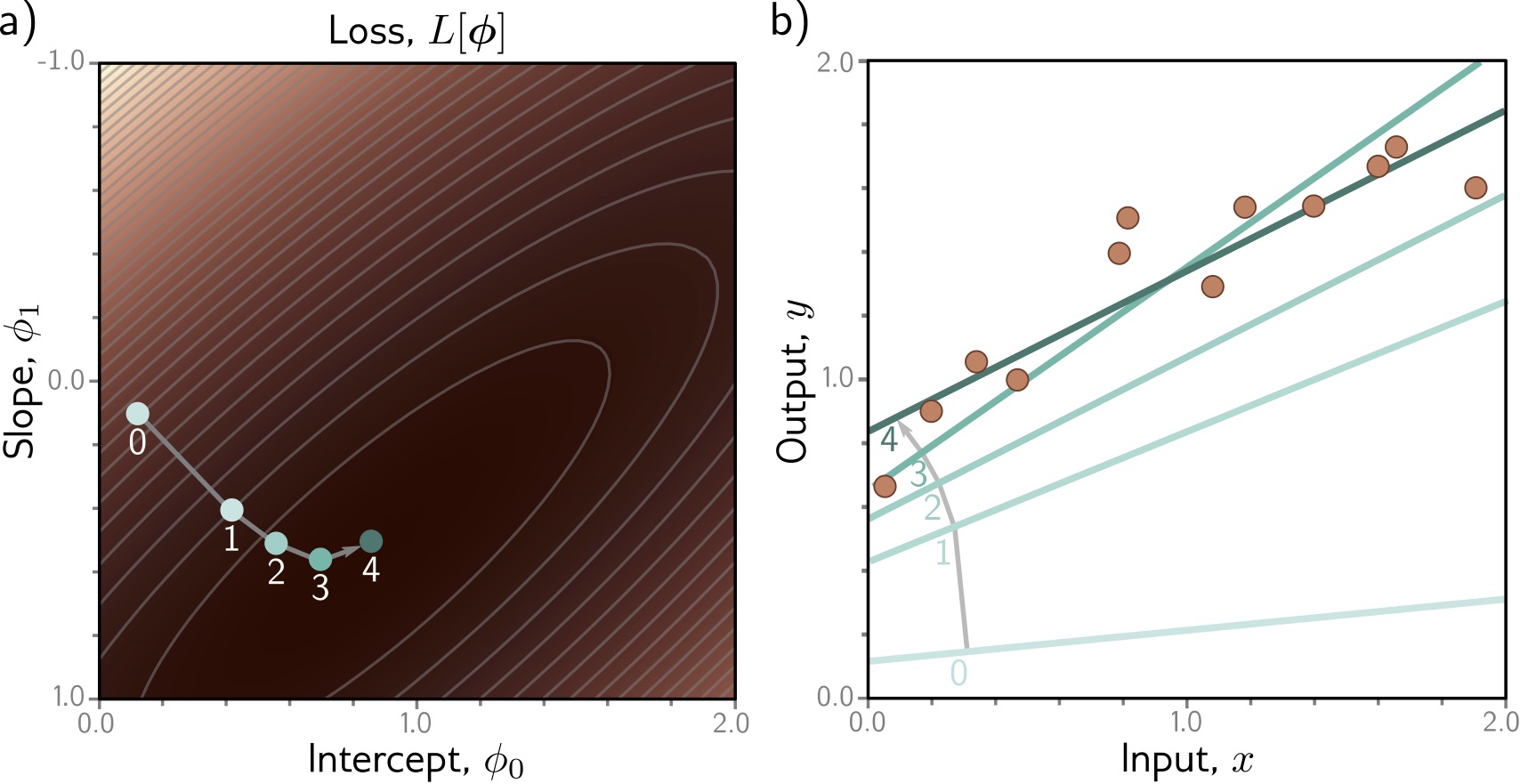
Shallow neural networks
\(y = f[x, \Phi] = \Phi_0 \\ + \Phi_1 a[ \Theta_{10} + \Theta_{11} x] \\ + \Phi_2 a[ \Theta_{20} + \Theta_{21} x] \\ + \Phi_3 a[ \Theta_{30} + \Theta_{31} x]\)
We now have 10 parameters
And also, an “activation” function \(a[]\)
Shallow neural networks: Activation function ReLU
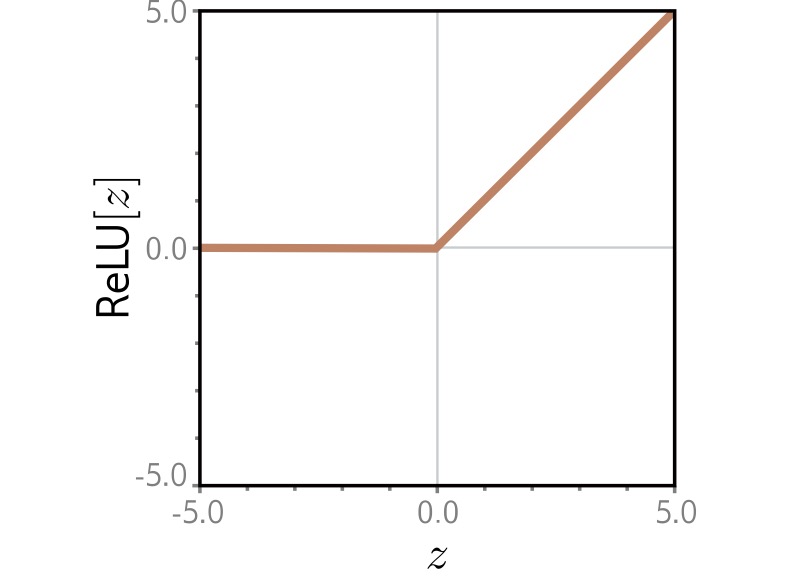
Shallow neural networks: Neural network intuition

Shallow neural networks: Neural network intuition
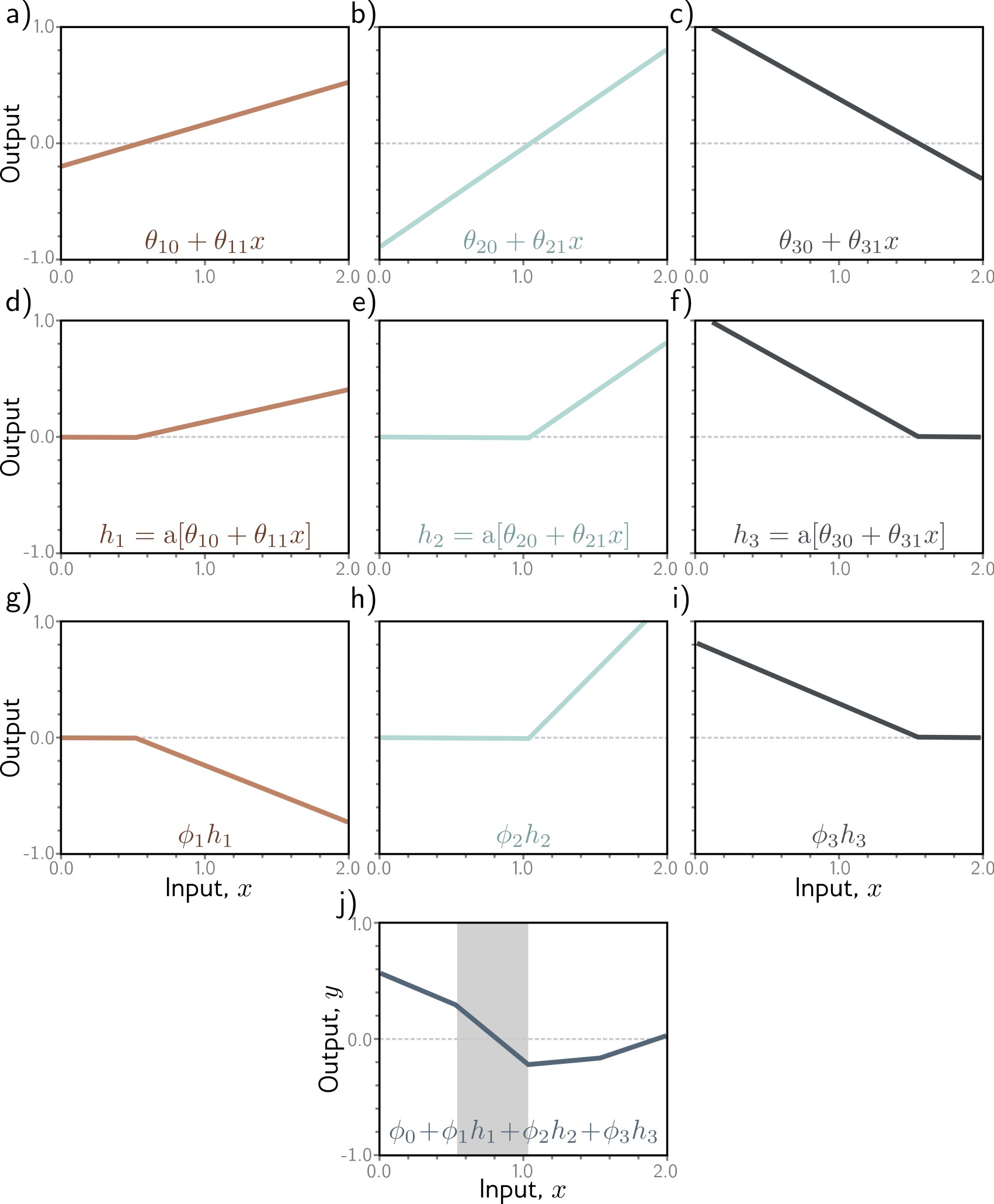
Shallow neural networks: Neural network intuition

Shallow neural networks: Universal Approximation Theorem

Shallow neural networks: Terminology
- Neural networks is composed of “layers”
- “input” layer, “hidden” layers, “output layer”
- Hidden units are called “neurons”
- As data passes through, the values are called “pre-activation” and “activations”
Deep neural networks: Composing multiple networks
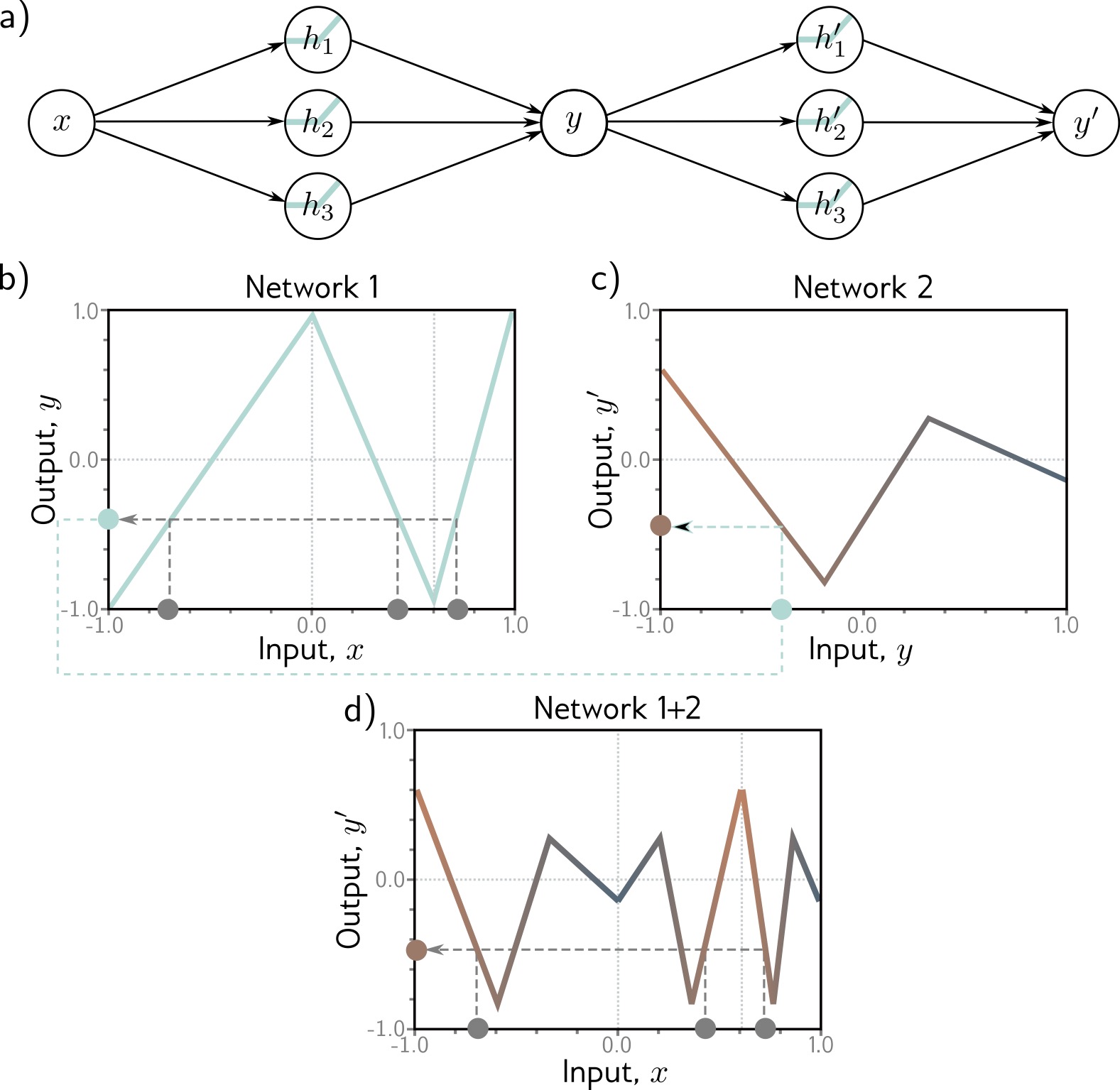
Deep neural networks: Folding Input Space

Deep neural networks: Two hidden layers

Deep neural networks: Multiple hidden layers
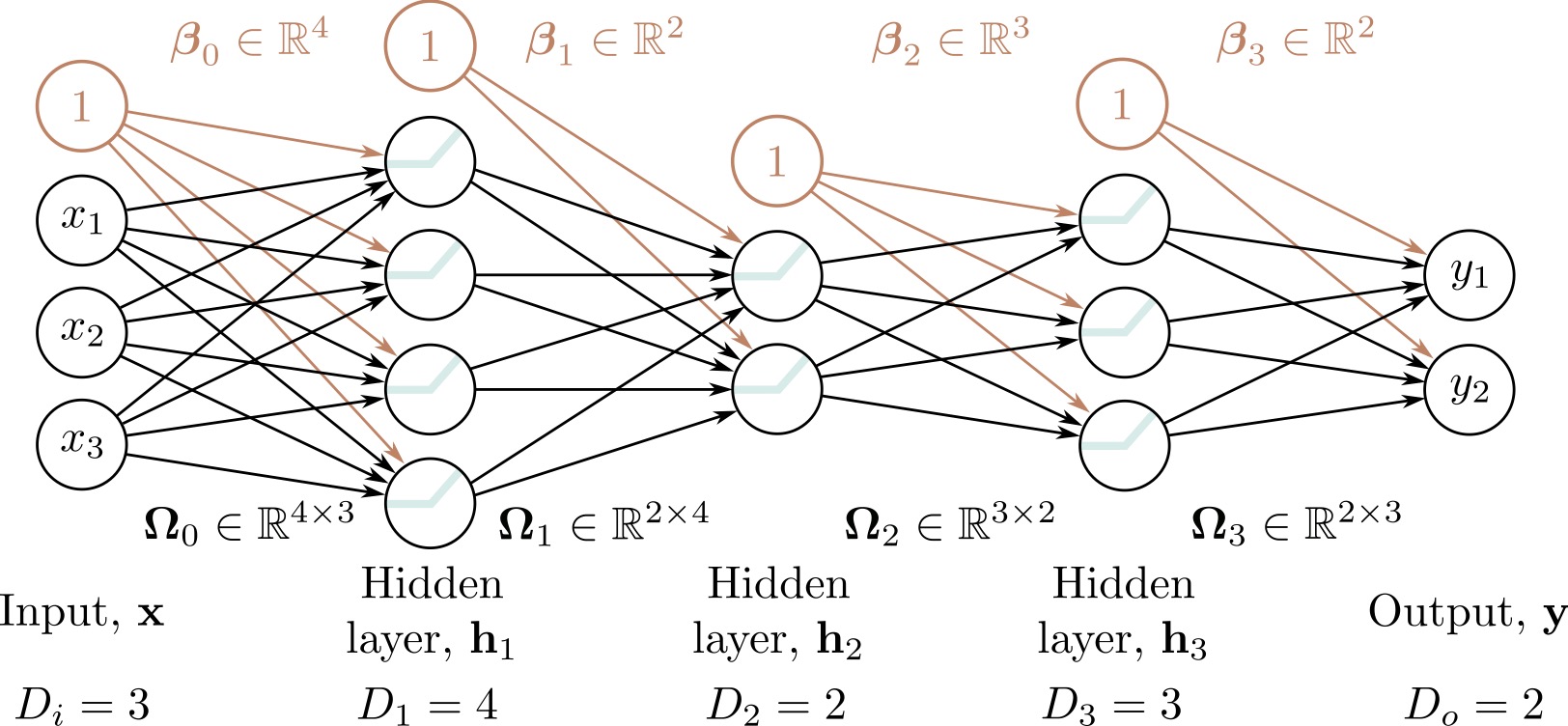
https://playground.tensorflow.org

https://poloclub.github.io/cnn-explainer/

Further References
https://distill.pub/2020/grand-tour/
http://projector.tensorflow.org/
https://ml4a.github.io/ml4a/looking_inside_neural_nets/
